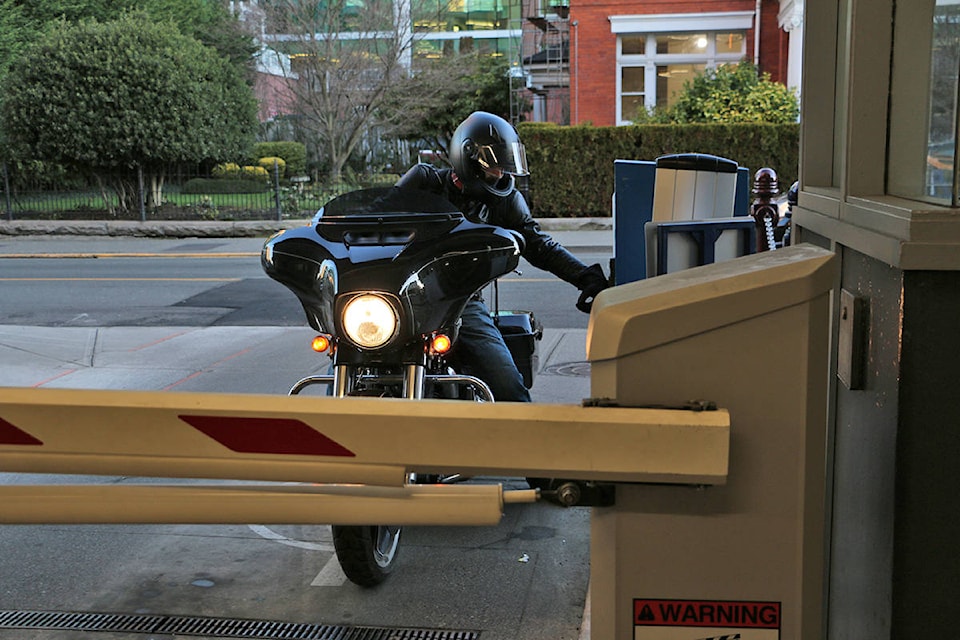Let’s reduce the convenience of car parking, I said in the first part of this commentary. But what about those who can’t easily walk, or bike, or take transit? More accommodations for them, I say. More accessible handicapped stalls and more curbside drop-off zones.
But for the rest of us, less convenient and more expensive vehicle parking is needed in order to shift us to a lower carbon society. Reducing the amount of parking for able bodied people actually makes it easier for us to provide ample handicapped parking and drop-off zones.
With the foreseeable rise of ride-hail services, there will be even more demand for curb drop-off. Let’s make that available while also improving space for people on foot and on bikes, for bus lanes, for wheelchairs, and for sidewalk business activity. Vibrant streets don’t depend on parked, privately-owned vehicles.
READ MORE: Final leg of Wharf Street bike lane, Humboldt Street plaza now open
We need to refocus on health, wellness, and climate. Transportation accounts for about 40% of our carbon footprint in this region. Province-wide, transportation is our largest category of greenhouse gasses. Clearly, if we are to reduce our GHGs, we need to reduce single vehicle use. The CRD recently declared that we are “in a climate emergency.”
Cars also take a lot of space. Four cars lined up to make a left turn at an intersection look like a significant line. Yet four people standing on the corner curb take very little space. Unfortunately, our street designs, in the form of advance green lights, multiple vehicle lanes, and parking, often give priority to our wealthiest people in large, personal vehicles.
I get that cars can be pleasurable places to be. Cushy upholstery, windows sealing off the city noise, your own choice of music. I have a nice car myself and grew up, like many, idolizing cool car designs. But individuals can change. Groups can change. Cities can change.
Change requires leadership, not opinion polls. Ask people how much parking they want and the answer will almost always be “more.” During city planning consultations, instead of asking how much parking people want, we should be asking what’s the healthiest mix of street uses.
Our parking expectations also push up the cost of housing. Parking minimums for residential buildings mean that, in most cases, developers have to build underground parking at a cost of $50,000-$100,000 per stall. That cost is passed on to buyers and renters. When people are unable to afford such housing, they commute from beyond the city core. Parking requirements push working people out of our city.
Meanwhile, 40 per cent of parking in most apartments and condos sits empty. Cities that have now removed parking minimums from new housing construction include Hartford, Buffalo, Minneapolis and Santa Monica. We need to follow their lead and build housing, not parking.
A 700 page book, The High Cost of Free Parking, analyses the economic and impacts of parking. It’s been out since 2005. Almost 15 years later, it’s time for us to start to change our behaviours.
Lorne Daniel
Victoria
- Lorne Daniel is a Victoria resident who walks, bikes, drives a car, takes transit, and has been a wheelchair user. His work in urban change has won awards from national and international organizations. He is founder of Greater Victoria Placemaking Network.



